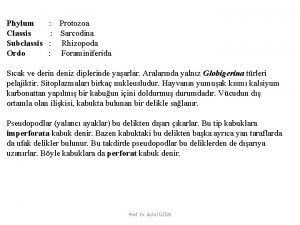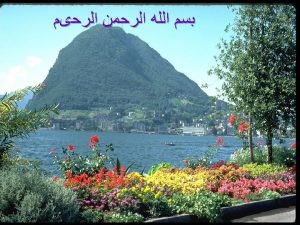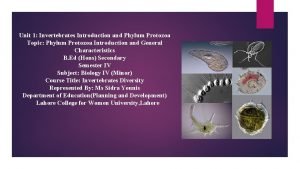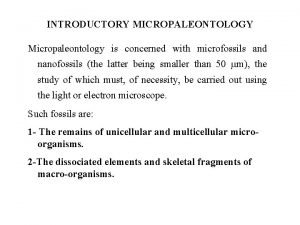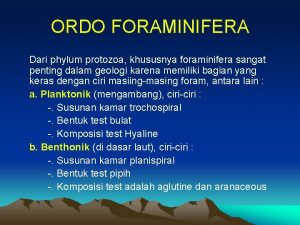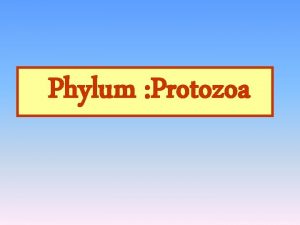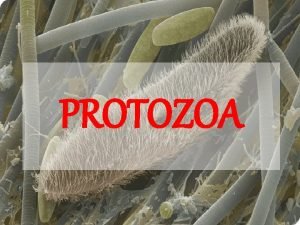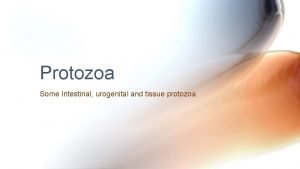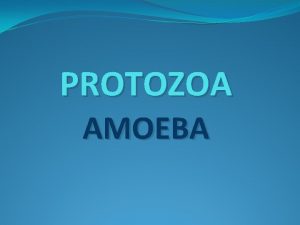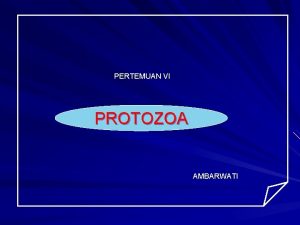ORDO FORAMINIFERA ORDO FORAMINIFERA Phylum of protozoa especially







- Slides: 7

ORDO FORAMINIFERA

ORDO FORAMINIFERA Phylum of protozoa, especially foraminifera are very important in geology because it has a hard part with the characteristic masiing each foram, among others: a. Planktonik (float), characteristics: -. Room layout trochospiral -. Rounded form of test -. Composition test Hyaline b. Benthonik (on the sea floor), features: -. Room layout planispiral -. The form of flat test -. The test is aglutine and aranaceous

A. Foraminifera Planktonik Foraminifera planktonik amount genusnya slightly, but the number of many species. Plankton are generally float on the surface of living and fossil marine plankton can be used to solve geological problems, including: -. As a fossil guide -. Correlation -. Determining the sedimentation environment Foram plankton does not always live in the sea surface, but at a certain depth; -. Living between 30 - 50 meters -. Living between 50 - 100 meters -. Living on the depth of 300 meters -. Living on the depth of 1000 meters There are groups of foraminifera plankton, which is always to adjust to the temperature, so that at the time of the day of his life almost at the bottom of the sea, while the night life in the surface sea water. For example is Globigerina pachyderma in the North Atlantic Ocean at a depth of living 30 to 50 meters, while in the Central Atlantic Ocean on the depth of 200 lives up to 300 meters

B. Foraminifera Benthonik Fossil foraminifera benthonik often used for the determination of environmental precipitation, while the fossil foram benthonik used for determination of age. Benthonik this fossil is very valuable for the determination of the ancient environment. Foraminifera can be used as the marine environment in general is: At the depth of 0 - 5 m, with temperatures 0 -27 degrees centigrade, many found the genus-the genus Elphidium, Potalia, Quingueloculina, Eggerella, Ammobaculites and other forms of wall cangkangnya made from pasiran. At the depth of 15 - 90 m (3 -16 º C), the genus found Cilicides, Proteonina, Ephidium, Cuttulina, Bulimina, Quingueloculina and Triloculina. At the depth of 90 - 300 m (9 -13 o. C), the genus found Gandryna, Robulus, Nonion, Virgulina, Cyroidina, Discorbis, Eponides and Textularia. At the depth of 300 - 1000 m (5 -8 º C), found Listellera, Bulimina, Nonion, Angulogerina, Uvigerina, Bolivina and Valvulina

Life & Abundance Scheme Foraminifera in the Sea

FORAMINIFERA MORFOLOGY v Form outside foraminifera, if observed under the microscope can show some kenampakan the various body shell of foraminifera, including: -. Wall, terluar layer of the body shell of foraminifera in the works to protect the body. Can be made from organic substances-substances that produce their own or of foreign material taken from around them. -. Room, where the foraminifera in the protoplasm. -. Protoculum, rooms on the main body shell of foraminifera. -. Septa, septum-septum that separates between the rooms. -. Suture, a field that separates between 2 adjacent rooms. . -. APERTURE, holes in the main body shell foraminiferra that s erves as the mouth or the way out protoplasm

DESCRIPTION: A. Proloculus B: Room C: APERTURE D: suture
